Before You Go. Denver is a city of unusual weather, because of its elevation. I still remember that Monday Night Football game in 1984, when the Green Bay Packers, thinking they'd escaped the Wisconsin chill, got surprised by a blizzard when they played the Broncos at Mile High Stadium. On October 15. Check the Denver Post website before you decide to go.
For the moment, the projections are varying greatly. For Friday, they're saying high 70s in the afternoon and high 40s at night; for Saturday, high 50s by day, mid-30s by night; for Sunday, mid-60s by day, low 40s by night. You didn't think you were going to need a winter jacket for a baseball game in the middle of May, did you? At least no rain (or snow) is predicted.
This will be the Mets' only trip out to Denver this season, but if you don't want to take a chance on the weather, then, unless you're doing the All 30 Ballparks In One Year thing, the old adage "Wait 'Til Next Year" comes into play: Skip this series, and stay home and watch it on television. The Rockies are a team with rich owners, a relatively new ballpark and a solid fan base: Unlike the hockey team of the same name that became the New Jersey Devils in 1982, they're not going anywhere.
Denver is in the Mountain Time Zone, so you'll be 2 hours behind New York time. And there's a reason it’s called the Mile High City: The elevation means the air will be thinner. Although the Rocky Mountain region is renowned for outdoor recreation, if you're not used to it, try not to exert yourself too much. Cheering at a sporting event shouldn't bother you too much, but even if the weather is good, don't go rock-climbing or any other such activity unless you've done it before and know what you’re doing.
Tickets. When the Rockies began play in 1993, there had never been a major league team in the entire Mountain Time Zone, and the Denver Bears and their successors the Denver Zephyrs had been among the best-attended teams in the minor leagues. That, plus the huge capacity of Mile High Stadium, allowed Colorado fans to set several major league attendance records that are unlikely to be broken in my lifetime, including most fans for an Opening Day game (80,227), most fans for a single regular-season game (same -- the old Yankee Stadium and Cleveland had a few bigger crowds for doubleheaders), most fans in a single season (4,483,350 in that 1st season of 1993) and most fans per home game (56,094 in the strike-shortened 1994 season).
When Coors Field opened in 1995, with a capacity around 47,000 (now officially 50,398), every game was still sold out, until 1999. The Rockies have gone downhill since their last Playoff berth in 2009, but still averaged 31,334 for the 2015 season. So tickets may not be easy to come by.
For tickets that are available, a Rockies game is the most economical in the major leagues: Infield Club seats are $70, Midfield Boxes are $50, Outfield Boxes are $40, Upper Reserved Infield seats are $23, Upper Reserved Outfield seats are $16, Pavilion (left field bleacher) seats are $27, Upper Rightfield Reserved are $67, and the center field "Rockpile" seats -- a holdover from the bleachers of that nickname at Mile High Stadium -- are the cheapest seats in Major League Baseball, just $7. That's right: Seven dollars. For a Major League Baseball game. In the 21st Century.
Getting There. It’s 1,779 miles from Times Square in New York to the Denver plaza that contains the State House and the City-County complex, and 1,790 miles from Citi Field to Coors Field. You're probably thinking that you should be flying.
The good news: Flying to Denver, considering how far it is, is relatively cheap. You can get a round-trip flight heading out on Friday morning, and buy it today, for a little under $700, depending on what time you want to fly. More likely, it'll be around $800, but that's still a decent price per mile.
The bad news: It won't be nonstop. While Stapleton International Airport (named for 1923-47 Mayor Benjamin F. Stapleton) was a major change-planes-here spot for going to the West Coast and Las Vegas, the new Denver International Airport isn't. You want to fly there, you'll have to change planes, most likely in either Chicago or Dallas.
Amtrak's Lake Shore Limited leaves Penn Station at 3:40 PM Tuesday, and arrives at Union Station in Chicago at 9:45 AM Central Time on Wednesday. The California Zephyr leaves Chicago at 2:00 PM Wednesday and arrives at Denver's Union Station at 7:15 AM Mountain Time on Thursday. The return trip would leave Denver at 7:10 PM Sunday (after the series' afternoon finale), arrive in Chicago at 2:50 PM Monday, leave Chicago at 9:30 PM Monday, and get back to New York at 6:23 PM Tuesday. The round-trip fare is $448.
Conveniently, Union Station is at 1700 Wynkoop Street at 17th Street, just 3 blocks from Coors Field. The front of the building is topped by a clock, framed by an old sign saying UNION STATION and TRAVEL by TRAIN.
Greyhound allows you to leave Port Authority Bus Terminal at 4:00 PM Wednesday, and arrive at Denver at 10:50 AM on Friday, a trip of just under 45 hours, without having to change buses. That 44:50 does, however, include layovers of 40 minutes in Philadelphia, an hour and a half in Pittsburgh, an hour in Columbus, an hour in Indianapolis, 2 hours in St. Louis, half an hour in Salina, Kansas, and another half-hour in Burlington, Colorado; plus half-hour meal stops in Pennsylvania, Illinois and Kansas. Round-trip fare is $388, but you can get it for $290 on advanced-purchase. You can get a bus back at 7:10 PM Sunday and be back in New York at 3:50 PM Tuesday. The Denver Bus Center is at 1055 19th Street, 5 blocks from Coors Field.
If you actually think it’s worth it to drive, get someone to go with you, so you’ll have someone to talk to, and one of you can drive while the other sleeps. You’ll be taking Interstate 80 most of the way, through New Jersey, Pennsylvania, Ohio, Indiana, Illinois, Iowa and Nebraska, before taking Interstate 76 from Nebraska to Colorado, and then Interstate 25 into Denver. (An alternate route: Take the New Jersey and Pennsylvania Turnpikes to Interstate 70 and then I-70 through Pennsylvania, Ohio, Indiana, Illinois, Missouri, Kansas and Colorado into downtown Denver. It won’t save you an appreciable amount of time over the I-80 route, though.)
If you do it right, you should spend about an hour and a half in New Jersey, 5 hours and 15 minutes in Pennsylvania, 4 hours in Ohio, 2 hours and 30 minutes in Indiana, 2 hours and 45 minutes in Illinois, 5 hours and 15 minutes in Iowa, 6 hours in Nebraska, and 3 hours and 15 minutes in Colorado. Including rest stops, and accounting for traffic (you'll be bypassing Cleveland and Chicago, unless that’s where you want to make rest stops), we're talking about a 40-hour trip.
Even if you're only going for one game, no matter how you got there, get a hotel and spend a night. You'll be exhausted otherwise. Trust me, I know: Trains and buses are not good ways to get sleep.
Once In the City. Founded in 1858 as a gold rush city, and named for James W. Denver, then Governor of Kansas Territory from which Colorado was separated, Denver is a city of 650,000 people, in a metro area of 3.3 million -- roughly the population of Brooklyn and Staten Island combined. It's easily the biggest city in, and thus the unofficial cultural capital of, the Rocky Mountain region.
The State House in downtown Denver
Broadway is the main north-south drag, separating East addresses from West. But the northwestern quadrant of the street grid is at roughly a 45-degree angle from the rest of the city, and this area includes the central business district, Union Station and the ballpark.
The sales tax in the State of Colorado is 2.9 percent, however, the City of Denver adds a 3.62 percent sales tax, for a total of 6.52 percent. ZIP Codes in Colorado start with the digits 80 and 81, with the Denver area running from 800 to 810. The Area Code for Denver is 303, with 720 overlaid.
Bus and light rail service in Denver is run by the Regional Transportation District (RTD), and goes for $2.25 for a single ride, and $6.75 for a DayPass. Denver switched from tokens to farecards in 2013.
Don't worry, the weather isn't forecast to look like this during your visit.
I chose this picture for the look of the train, not for the snow and wet streets.
The Denver Post is a good paper, but don't bother looking for the Rocky Mountain News: It went out of business in 2009.
Going In. Coors Field is in the Lower Downtown, or LoDo, section of Denver, a mile and a half northwest of Civic Center Park, the government center which contains the City & County Building and the Colorado State House. The Number 60 bus will get you to within 3 blocks of the ballpark. Denver has a light rail system, RTD, but chances are your hotel will be downtown, and you'd have to change trains at least once, so the 60 bus is the way to go. If you're driving, parking is $13.
The mailing address is 2001 Blake Street. Blake bounds the 1st base side, 20th Street the 3rd base side, 22nd Street the right field stands, and Wewatta Street and the light rail tracks the left field side.
Most likely, you'll enter through the home plate gate, at 20th & Blake (shown above). I like that: All visits to the ballpark should make your first view of the field from behind home plate. This was rarely possible with the old New York ballparks: The stadiums pointed east, and both subway exits put you at the right field corner (if you entered Yankee Stadium from the 157th Street plaza, or the left field corner if you came down 161st Street). In the case of Coors, it’s just more convenient.
The field is natural grass, and points due north. Outfield distances are 347 feet to left field, 390 to left-center, 415 to center, 375 to right-center, and 350 to right. Why so far? To counteract the easy home runs that were hit at Mile High, due to the thin mountain air. A line of purple seats, 6 rows from the top of the upper deck, shows the exact point at which the elevation of the park is 5,280 feet above sea level, making it "a mile high."
After years of opposing teams complaining that the highest elevation in MLB history resulting in too many home runs, prior to the 2002 season the team ordered a study to determine if the elevation was the cause. As it turned out, the study suggested it was not thin air, but dry air that was doing it.
So a giant humidor – a room-sized version of the kind of box where a smoker would store his cigars – was put into the ballpark, and the baseballs were stored there. As a result, the ball is no longer going as far as it once did, although the thin air does make it go farther than at most ballparks. The thin air also makes curveballs curve less, which means it’s still not a good park for pitchers. Nevertheless, the team’s pitching staff can no longer be called, as it once was, "the Rocky Horror Pitching Show." The longest home run was by Andres Galarraga, a 529-footer in 1997.
This past February, Coors Field hosted 2 hockey games. The University of Denver beat arch-rival Colorado College 4-1 in a game billed as the Battle On Blake. And as part of the NHL Stadium Series, the Colorado Avalanche hosted the Detroit Red Wings, perhaps perversely celebrating the 20th Anniversary of the birth of their brief but nasty rivalry. The Wings won 5-3.
Food. Being a "Wild West" city, you might expect Denver to have Western-themed stands with "real American food" at its ballpark. Being in a State with a Spanish name, in a land that used to belong to Mexico, you might also expect to have Mexican food. And you would be right on both counts.
A stand called Buckaroos is at Section 148, Burritos is at 134, the Helton Burger Shack (named for Rockies star Todd Helton) at 153, a full-service bar called the Camarena Loft behind 201, another called Margaritas at 330, 3 Monster Nacho stands, and, for club-seaters, the Mountain Ranch Club Bar.
There's also stands with baseball-themed names, including several Fan Fare stands, Fair Territory in 106, and Yard Ball Yogurt at 330. There's a Starbucks-type place called Madeline’s at 151, a pair of sandwich bars called the Club Carvery behind 219 and 238, a coffee bar call Java City at 223, a Chinese-themed Wok in the Park at 150, and a Blue Moon Brewing Co. outlet at 111. The Rooftop at Coors Field has, according to a recent Thrillist article on the best food at each major-league ballpark, the best item at Coors Field: The CHUBurger, made by Colorado brewer Oskar Blues.
Buckaroos has "Dinger Nuggets," which I'm hoping is standard chicken nuggets, not dinosaur meat. (I’ll get to that in "During the Game.")
Team History Displays. The Rockies' history is short. They have made the Playoffs 3 times (in 1995, 2007 and 2009, all through the National League Wild Card, they haven't yet won the Western Division in the regular season), have won just 1 Pennant (2007), and have won a grand total of zero World Series games. As yet, they have no figures in their history who are members of the Baseball Hall of Fame. No Rockies players were named to The Sporting News' 100 Greatest Players in 1999. In 2006, Larry Walker won the Rockies' edition of the DHL Hometown Heroes contest.
However, there are 5 men with Rockies connections in the Colorado Sports Hall of Fame, whose display is at the new Broncos' stadium: Original owner Jerry McMorris, original manager Don Baylor, early stars Andres Galarraga and Larry Walker, and more recent star Todd Helton.
And while Walker's Number 33 has not been reissued, officially, their only retired number, aside from the universally-retired 42 for Jackie Robinson, who died over 20 years before the Rockies ever played a game, is the Number 17 of 1997-2013 1st baseman Todd Helton.
Those numbers are on the outfield wall, as is a display reading "KSM," for Keli Scott McGregor. Keli McGregor was a native of the Denver suburbs who played for Colorado State, and then briefly with the Broncos in 1985. He joined the Rockies' front office in the Autumn of 1993, after the 1st season, and was team president from 2001 until 2010, when he died of an undetected heart virus at age 47.
The 2007 Pennant is displayed top the left field scoreboard, under the giant Rockies logo. The 1995 NL Wild Card banner used to be on the wall, but once a Pennant was won, it seemed a bit silly. (Nevertheless, the Mets still have that 1999 Wild-Card display on the third-base facing of Citi Field, along with their 2 World Championship, 3 other Pennant, and 2006 NL East stanchions.) There is no mention, anywhere in the stadium, of the Pennants won by the Rockies' minor-league predecessors, the Denver Bears (also briefly known as the Denver Zephyrs).
Stuff. Coors Field has the Majestic Team Store behind Section 149, in the left-field corner. I don't know if the Rockies gear they sell includes cowboy hats with team logos on them, to tie in with the State's Western heritage. In addition, there are 7 Rockies Dugout Stores throughout Colorado, including 1 in Denver at 535 16th Street.
Don’t look for old Rockies videos on DVD – there aren't any. Unless you want to find the official highlight film of the 2007 World Series, in which the Rockies got swept by the Boston Red Sox. You'd think that, having won 14 of their last 15 regular-season games, making it 21 out of 22 counting the Playoffs, winning their 1st-ever Pennant, and setting a major league record for highest team fielding percentage (.989), there would be a commemorative DVD. But there isn't.
There are, however, a few books about the team, including A Magical Season: Colorado’s Incredible 2007 Championship Season, by the staff of the Denver Post. You can also pick up Colorado Rockies: The Inaugural Season, by Rich Clarkson, which came out right after that 1993 season ended.
The first-year Rockies probably got more respect than any 67-95 team ever. To compare, the 1969 Seattle Pilots went 64-98. They also played in a stadium that was inappropriate for the major leagues – albeit because it was an expanded 1930s Triple-A park, not a 1940s Triple-A park converted into a 1970s football stadium like Mile High. They got fewer fans in a homestand than the '93 Rox got in their home opener, got moved to Milwaukee right before their second season started, and today are remembered only for being in Jim Bouton’s book Ball Four. Even Seattle fans would prefer to believe their major league history started with the Mariners in 1977.
During the Game. A recent Thrillist article ranked Rockies fans 29th among the "most intolerable" fans. More accurately, that makes them the 2nd-most tolerable.
Coloradans love their sports, but they're not known as antagonistic. Although the Jets came within a half of derailing a Bronco Super Bowl in 1999 (1998 season), and the Devils came within a game of short-circuiting their Stanley Cup run in 2001, the people of the Centennial State don't have an ingrained hatred of New Yorkers. As long as you don't wear Kansas City Chiefs or Oakland Raiders gear, you'll probably be completely safe. (But, as always, watch out for obnoxious drunks, who know no State Lines.)
All 3 games in this series will have promotions. On Friday night, as part of their Fan Friday series, the Rockies will be giving away team-logo tote bags. Saturday night will be Scout Night. And on Sunday afternoon, they're giving away a plastic bat & ball set.
The Rockies hold auditions for National Anthem singers, as opposed to having a regular, but they give priority to groups, even letting their Group Sales department handle applications.
When construction workers were excavating to build Coors Field, they found dinosaur bones. So the Rockies' mascot was made a dinosaur. In honor of the thin air's propensity for allowing home runs, the mascot was named Dinger the Dinosaur. Great idea, right? Well, a Tyrannosaurus Rex (or even a "Tyrannosaurus Rox") would probably scare kids, so Dinger is a purple triceratops, wearing a Rockies jersey, Number 00. Think of him as Barney's cousin from the weird side of the family.
The Rockies play Bruce Channel’s song "Hey! Baby" after "Take Me Out to the Ball Game" during the 7th inning stretch. Why? I have no idea. Channel isn't from Colorado, or any other Rocky Mountain State (he's from Texas). Why not a Colorado singer's song? You got me.
I guess "Rocky Mountain High" – whose singer used the stage name John Denver, for crying out loud – isn't particularly rousing. And his "Thank God I'm a Country Boy" was already the 7th inning stretch song for the Baltimore Orioles. Also not especially crowd-cranking is "How to Save a Life" by The Fray, who, unlike John, are from Denver. Sometimes the Rockies play "Get Free" by the Australian rock band The Vines.
Their postgame victory song used to be "Rocky Mountain Way" by Joe Walsh of The Eagles, but it's been replaced by "Take the Field," as recorded by the Colorado Symphony.
After the Game. Denver has had crime issues, and just 3 blocks from Coors Field is Larimer Street, immortalized as a dingy, bohemian-tinged, hobo-strewn street in Jack Kerouac's novel On the Road. But that scene was written in 1947, and LoDo has become, with the building of Coors Field and the revitalization of Union Station, a sort of mountain Wrigleyville. So you’ll probably be safe.
LoDo is loaded with bars that will be open after the game, including Scruffy Murphy's at Larimer & 20th, and an outlet of the Fado Irish Pub chain at Wynkoop & 19th. But the only baseball-named place I can find anywhere near Coors is Sandlot Brewery, at 22nd & Blake, outside the park's right-field corner. Behind home plate, at 1930 Blake Street, is The Sports Column, hailed by a recent Thrillist article as the best sports bar in the State of Colorado.
Perhaps the most famous sports-themed restaurant near Denver is Elway's Cherry Creek, a steakhouse at 2500 E. 1st Avenue in the southern suburb of Cherry Creek. Bus 83L. It’s owned by the same guy who owns John Elway Chevrolet in another southern suburb, Englewood.
About a mile southeast of Coors Field, at 538 E. 17th Avenue in the Uptown neighborhood (not sure why a southern, rather than northern, neighborhood is called "Uptown"), is The Tavern, home of the local New York Giants fan club. Jet fans gather at Chopper's Sports Grill, possibly named for Chopper Travaglini, at 80 S. Madison Street at Bayaud Avenue, 3 miles southeast of downtown, in the Pulaski Park neighborhood. Bus 83, then a mile's walk.
If your visit to Denver is during the European soccer season (which is now winding down), your best bet for watching your favorite club is at The Three Lions (named for the crest on the jerseys of the England national team), 2239 E. Colfax Avenue, about 2 miles east of downtown. Number 15 bus.
Sidelights. Sports Authority Field at Mile High, formerly Invesco Field at Mile High, has been the home of the NFL's Denver Broncos since 2001. Everyone just gives it the same name as the old facility: "Mile High Stadium." It includes the Colorado Sports Hall of Fame, and the Broncos’ Ring of Fame.
It was built on the site of the McNichols
Sports Arena, home to the NBA’s Denver Nuggets from 1975 to 1999, the NHL’s
Colorado Avalanche from 1995 to 1999, and the first major league team called
the Colorado Rockies, the NHL team that became the Devils, from 1976 to 1982.
The Denver Dynamite played there from 1987 to 1991, made the Arena Football
League Playoffs every season, and won the 1st ArenaBowl in 1987. But the cost
of running the team was too high, and it folded.
It hosted the NCAA Final Four in 1990,
with UNLV (the University of Nevada at Las Vegas) clobbering Duke. (The
University of Colorado, in Boulder, made the Final Four in 1942 and 1955,
although it wasn't yet called the Final Four. No other Colorado-based
school has made it, and none has won a National Championship -- not in
basketball, anyway.)
When the time came to play the final
concert at McNichols, the act that played the first concert there was brought
back: ZZ Top. This fact was mentioned on a Monday Night Football broadcast,
leading Dan Dierdorf to note the alphabetic distinction of the long red-bearded
men, and say, “The first one should have been ABBA.” Which would have been
possible, as they were nearly big in the U.S. at the time. However, the fact
that the arena only lasted 24 years, making it not that hard for the act that
played the first concert there to also play the last, says something about
America's disposable culture.
The old stadium was just to the north of
the new stadium/old arena. The current address is Mile High Stadium Circle, but
the old intersection was W. 20th Avenue & Bryant St. (2755 W. 17th
Avenue was the mailing address.) It was built in 1948 as Bears Stadium, an
18,000-seat ballpark.
When the American Football League was
founded in 1960, it was expanded to 34,000 seats with the addition of outfield
seating. The name was changed to Mile High Stadium in 1966, and by 1968 much of
the stadium was triple-decked and seated 51,706.
In 1977 – just in time for the Broncos to make their first Super Bowl run and start “Broncomania” – the former baseball park was transformed into a 76,273-seat horseshoe, whose east stands could be moved in to conform to the shape of a football field, or out to allow enough room for a regulation baseball field. The old-time ballpark had become, by the standards of the time, a modern football stadium.
In 1977 – just in time for the Broncos to make their first Super Bowl run and start “Broncomania” – the former baseball park was transformed into a 76,273-seat horseshoe, whose east stands could be moved in to conform to the shape of a football field, or out to allow enough room for a regulation baseball field. The old-time ballpark had become, by the standards of the time, a modern football stadium.
The biggest complaint when the Rockies
arrived in 1993 wasn’t the thin air, or the condition of the stadium (despite
its age, it was not falling apart), but the positioning of the lights: Great
for football fans, but terrible for outfielders tracking fly balls. But it was
only meant to be a temporary ballpark for the Rockies, as a condition for
Denver getting a team was a baseball-only stadium. What really led to the
replacement of Mile High Stadium, and its demolition in 2002, was greed: The Broncos'
desire for luxury-box revenue.
At Bears/Mile High Stadium, the Broncos
won AFC Championships in 1977, 1986, 1987, 1989, 1997 and 1998, winning the
Super Bowl in the last 2 years after losing the first 4 in blowouts.
(They've now won an AFC title at the new stadium, but not a Super Bowl.)
The Denver Bears won Pennants while playing there in 1957 (as a Yankee farm
team), 1971, 1976, 1977, 1981, 1983 and 1991 (winning the last one under the
Denver Zephyrs name).
The old stadium also hosted the Denver
Gold of the United States Football League, the Colorado Caribous of the
original North American Soccer League, and the Rapids from their 1996 inception
until 2001 -- in fact, they played the stadium's last event, before playing at
the new stadium from 2002 to 2006. The U.S. national soccer team played a pair
of games at Mile High Stadium in the 1990s, and beat Mexico at the new stadium
in 2002 (the only game they've played there so far).
While the 2008 Democratic Convention was
held at the Pepsi Center, Senator Barack Obama gave his nomination acceptance
speech outdoors in front of 80,000 people at New Mile High Stadium.
The Red Lion Hotel Denver and the Skybox
Grill & Sports Bar are now on the site of the old stadium. At
McNichols, the Nuggets reached the ABA Finals in 1976, and the Avalanche won
the 1996 Stanley Cup (albeit clinching in Miami). Elvis Presley sang at
McNichols on April 23, 1976.
The new stadium, and the site of the old
stadium and arena, are at Mile High Station on the light rail C-Line and
E-Line.
The Nuggets, known as the Denver Rockets
until 1974, played at the Denver Auditorium Arena, at 13th & Champa
Streets, from their 1967 inception until McNichols opened in 1975.
It opened in 1908, and its seating
capacity of 12,500 made it the 2nd-largest in the country at the time, behind
the version of Madison Square Garden then standing. It almost immediately
hosted the Democratic National Convention that nominated William Jennings Bryan
for President for the 3rd time – although it’s probably just a coincidence that
the Democrats waited exactly 100 years (give or take a few weeks) to go back
(it's not like Obama didn't want to get it right the 1st time, as opposed
0-for-3 Bryan).
The Auditorium Arena hosted Led Zeppelin's
1st American concert on December 26, 1968. It was demolished in 1990 to make
way for the Denver Performing Arts Complex, a.k.a. the Denver Center. Theatre
District/Convention Center Station on the light rail’s D-Line, F-Line and
H-Line.
The Pepsi Center is across Cherry Creek
from downtown, about 2 miles northwest of City Hall. The intersection is 11th
Street & Auraria Parkway, but the mailing address is 1000 Chopper
Circle, in honor of Robert "Chopper" Travaglini, the beloved former
trainer (and amateur sports psychologist) of the Nuggets, who share the arena
with the NHL's Colorado Avalanche. It is 1 of 10 current arenas that is home to
both an NBA team and an NHL team.
Chopper was actually a Jersey Boy, albeit
from Woodbury on the Philly side. He died in 1999, age 77, right before the new
arena opened. Chopper Circle is an extension of Wewatta Street.
Pepsi Center/Elitch Gardens station on the
RTD light rail. If you're coming in that way, you'll probably enter from the
west gate, the Grand Atrium. If you're driving, parking starts at just $5.00.
The rink is laid out east-to-west, and the Avs attack twice toward the east
end.
In addition to hosting the Avs and the
Nugs, the Pepsi Center has also hosted NCAA Tournament basketball games, the 2008 edition of NCAA's hockey "Frozen Four," and the 2008 Democratic National
Convention.
The Denver area's Major
League Soccer team, the Colorado Rapids, plays at Dick's Sporting Goods Park in
Commerce City, about 8 miles northeast of downtown. They’ve won the MLS Cup
since moving there, in 2010. The U.S. national team has played there 3 times: A
2009 win over Guatemala, and a 2013 win over Costa Rica, and a 2015 draw with
Panama. The women's team has played there twice: A 2008 win over Brazil, and a
2012 win over Australia. It's also hosted football, rugby, lacrosse and
concerts.
6000 Victory Way. If
you're going in by public transportation from downtown Denver, Number 48 bus to
60th Avenue & Dahlia Street, then Number 88 bus to 60th &
Monaco. Then they make you walk 10 blocks on 60th to get to the stadium.
The Beatles played Red Rocks Amphitheatre in suburban Morrison on
August 26, 1964. It is still in business, and a Colorado Music Hall of Fame is
a short walk away. 18300 W. Alameda Parkway, 10 miles west of downtown. Sorry,
no public transportation.
Elvis played 2 shows at the Denver
Coliseum on April 8, 1956, and 1 each on November 17, 1970 and April 30, 1973.
Built in 1951, it still stands, seating 10,500, and is best known for concerts
and the National Western Stock Rodeo. 4600 Humbolt Street at E. 46th Avenue,
off Interstate 70, 3 miles northeast of downtown. Apparently, no public
transportation to there, either.
Denver has some renowned museums,
including the Denver Museum of Nature & Science (their version of the
Museum of Natural History) at 2001 Colorado Blvd. at Montview Blvd. (in City
Park, Number 20 bus), and the Denver Art Museum (their version of the
Metropolitan Museum of Natural History), at 100 W. 14th Avenue Parkway at
Colfax Avenue (across I-25 from Mile High Stadium, Auraria West station on the
C-Line and E-Line).
Denver’s history only goes back to a gold
rush in 1859 – not to be confused with the 1849 one that turned San Francisco
from a Spanish Catholic mission into the first modern city in the American
West. The city isn’t exactly loaded with history.
There’s no Presidential Library – although
Mamie Doud, the eventual Mrs. Dwight D. Eisenhower, grew up there, and her
house is now a historic site. Mamie and “Ike” were married there, their son
John (a future General, Ambassador and military historian) was born there,
and the Eisenhowers were staying there when Ike had his heart attack in 1955.
The house is still in private ownership, and is not open to the public.
However, if you're a history buff, or if you just like Ike, and want to see it,
it’s at 750 Lafayette Street, at 8th Avenue. The Number 6 bus will get you to
6th & Lafayette.
After his heart attack, Ike was treated at
Fitzsimmons Army Medical Center in nearby Aurora, 12 years after Senator John
Kerry, nearly elected President in 2004 and now Secretary of State, was born
there. It’s not a Presidential Birthplace, because Kerry narrowly lost. It is
now the University of Colorado Hospital. The Fitzsimmons Golf Course is across
Montview Boulevard – it figures that Ike would be hospitalized next to a golf
course! 16th Avenue & Quentin Street. Number 20 bus from downtown.
The University of Denver's Newman Center for the Performing Arts hosted a 2012 Presidential Debate between Barack Obama and Mitt Romney. 2344 East Iliff Avenue, about 5 miles south of downtown. The University's Magness Arena hosted the Frozen Four in 1961, 1964 and 1976. 2250 E. Jewell Avenue. Both can be reached via H Line light rail to University of Denver Station.
Denver doesn't have as many tall buildings as the nation's bigger cities, nor are they as interesting, architecturally. The tallest building in the State of Colorado is Republic Plaza, 714 feet high, at 17th Street & Tremont Place downtown.
Denver doesn't have as many tall buildings as the nation's bigger cities, nor are they as interesting, architecturally. The tallest building in the State of Colorado is Republic Plaza, 714 feet high, at 17th Street & Tremont Place downtown.
The University of Colorado is in Boulder,
30 miles to the northwest. At Market Street Station, 16th & Market,
take the BV Bus to the Boulder Transit Center, which is on campus. The
ride should take about an hour and 20 minutes. Colorado State University
is in Fort Collins, 65 miles up Interstate 25 north, and forget about reaching
it by public transportation.
The U.S. Air Force Academy is outside Colorado Springs, 60 miles down I-25. As with Fort Collins, you'd need Greyhound. Unlike CSU, you might not be able to just go there: Some of the area is restricted. It is, after all, a military base.
Colorado Springs was also home to the Broadmoor Ice Palace, which hosted what's now called the Frozen Four every year from its inception in 1948 until 1957, and again in 1969. The 3,000-seat arena at The Broadmoor Resort & Spa was home ice to Colorado College from 1938 to 1994. 1 Lake Avenue, across Cheyenne Lake from the main hotel. Its 7,750-seat 1998 replacement, the Broadmoor World Arena, is 4 miles to the east, at 3185 Venetucci Blvd.
The U.S. Air Force Academy is outside Colorado Springs, 60 miles down I-25. As with Fort Collins, you'd need Greyhound. Unlike CSU, you might not be able to just go there: Some of the area is restricted. It is, after all, a military base.
Colorado Springs was also home to the Broadmoor Ice Palace, which hosted what's now called the Frozen Four every year from its inception in 1948 until 1957, and again in 1969. The 3,000-seat arena at The Broadmoor Resort & Spa was home ice to Colorado College from 1938 to 1994. 1 Lake Avenue, across Cheyenne Lake from the main hotel. Its 7,750-seat 1998 replacement, the Broadmoor World Arena, is 4 miles to the east, at 3185 Venetucci Blvd.
A few TV shows have been set in Denver,
but you won't find their filming locations there. The old-time Western Whispering
Smith and the more recent one Dr. Quinn, Medicine Woman were
set in old Colorado, but filmed in Southern California.
Probably the most famous show set in
Colorado is South Park, and that's a cartoon, so forget seeing
anything from that. Not quite as cartoonish was Mork & Mindy,
set in Boulder. The McConnell house actually is in Boulder, at 1619 Pine
Street. But don't try to copy the opening-sequence scene with Robin
Williams and Pam Dawber on the goalposts at the University of Colorado's Folsom
Field. You could fall, and end up saying, "Shazbot!"
The most famous show ever set
in Colorado was Dynasty, ABC's Excessive Eighties counterpart to
CBS' Dallas, starring John Forsythe as Blake Carrington, an oilman
and a thinly-veiled version of Marvin Davis, who nearly bought the Oakland
Athletics from Charlie Finley in 1978 with the idea of moving them to Mile High
Stadium, but the deal fell through. Right, you don't care about Blake, all
you care about is the catfights between the 2nd and 1st Mrs. Carrington's:
Krystle (Linda Evans) and Alexis (Joan Collins). The Carrington mansion seen in
the opening credits is in Beverly Hills, but the building that stood in for the
headquarters of Denver Carrington is at 621 17th Street, while the one that stood
in for Colbyco is at 1801 California Street.
Movies set in Denver or its suburbs include The Unsinkable Molly Brown, the original Red Dawn, and, of course, Things to Do In Denver When You're Dead. Films involving skiing often take place in Colorado towns such as Aspen or Vail. City Slickers, a film with loads of baseball references, has a cattle drive that ends in Colorado, but there's no indication of how close it is to Denver. Flashback takes place on the Pacific Coast, but Denver's Union Station stands in for a train station in San Francisco.
*
Denver had been considered a potential destination for Major League Baseball many times: The Continental League planned a team for there for 1961, it was a finalist for expansion teams in 1969 and 1977, and, as I said, the A's came within inches of moving there for the 1978 season. When they finally got a team in 1993, they were embraced as perhaps no expansion team has ever been embraced -- even more than the Mets themselves in 1962. And, the way it's worked out, the Rockies' 1st-ever game was against the Mets (a Met win at Shea), and their 1st game at Coors Field was against the Mets (a Rockies win in 14 innings).
The Rockies have seen the bloom come off the rose, but they've also seen some real success. The experience of Coors Field should be a good one. Have fun!
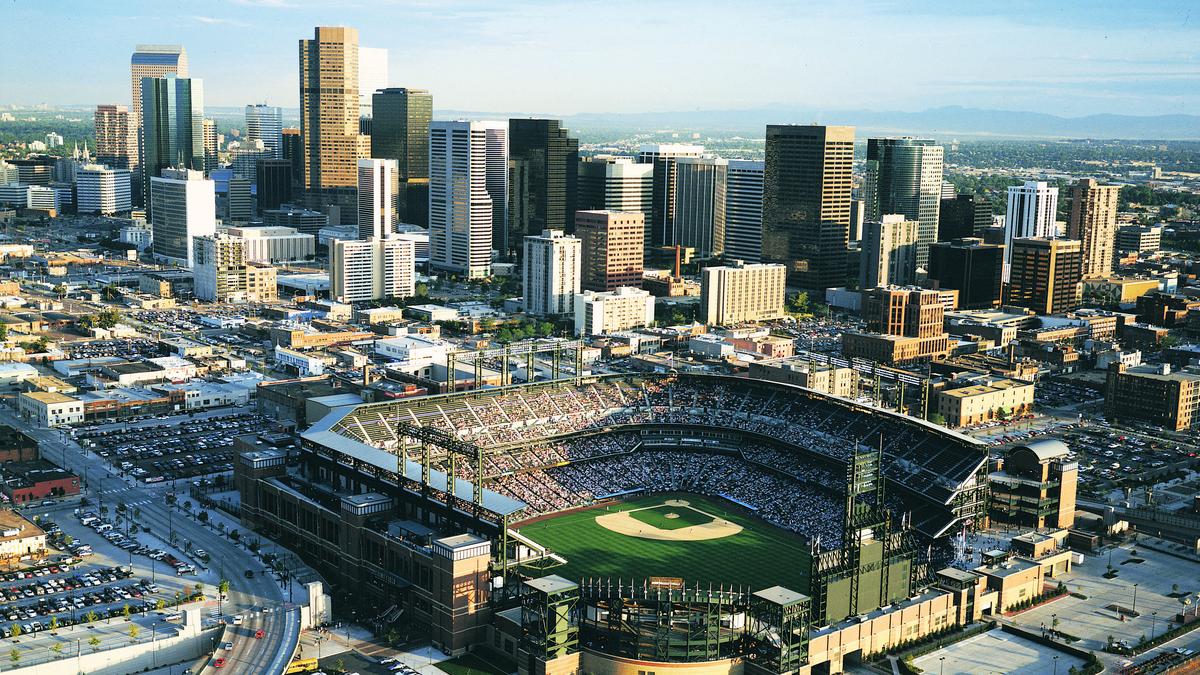
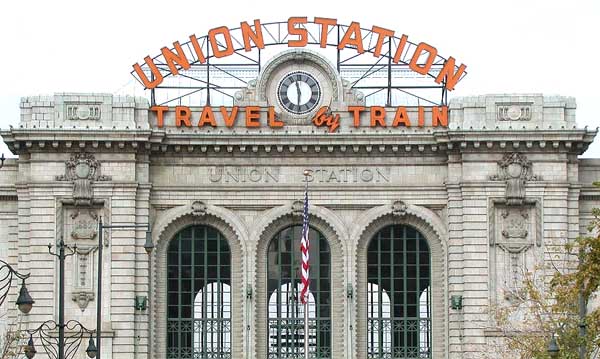
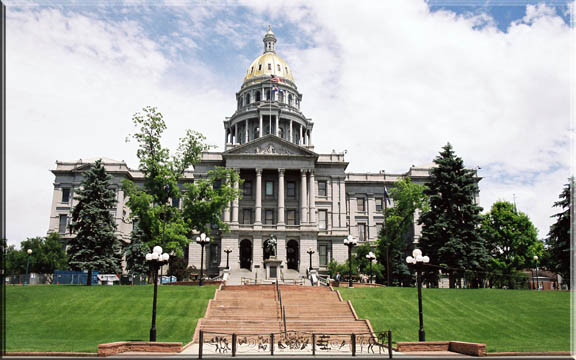
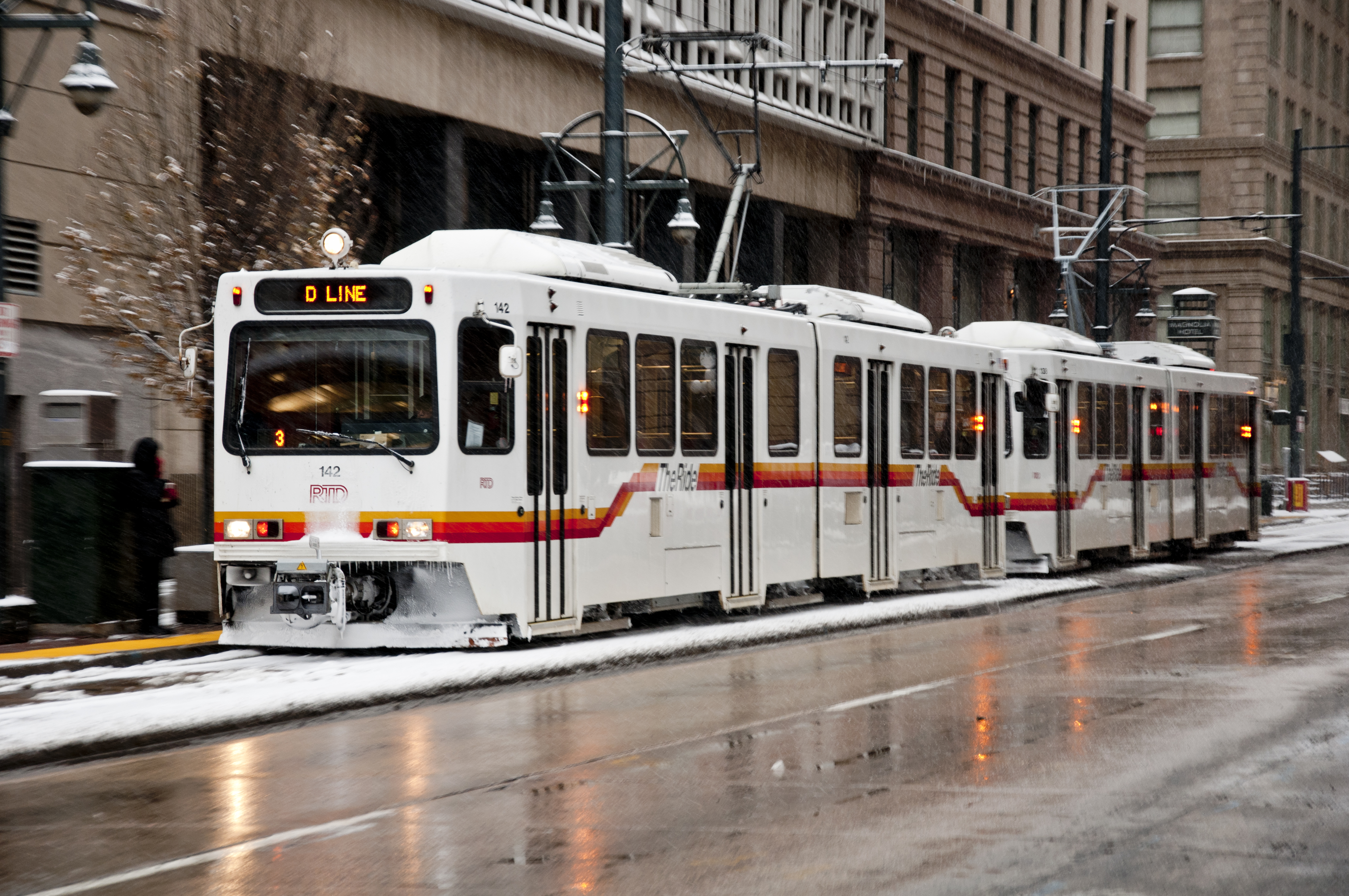

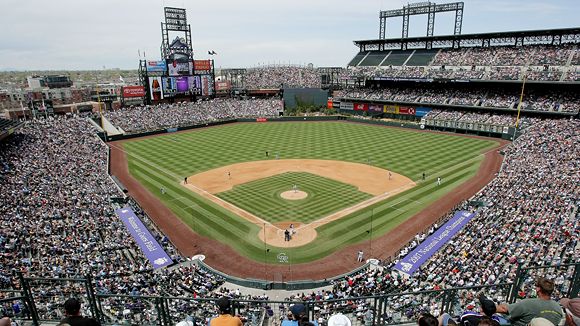
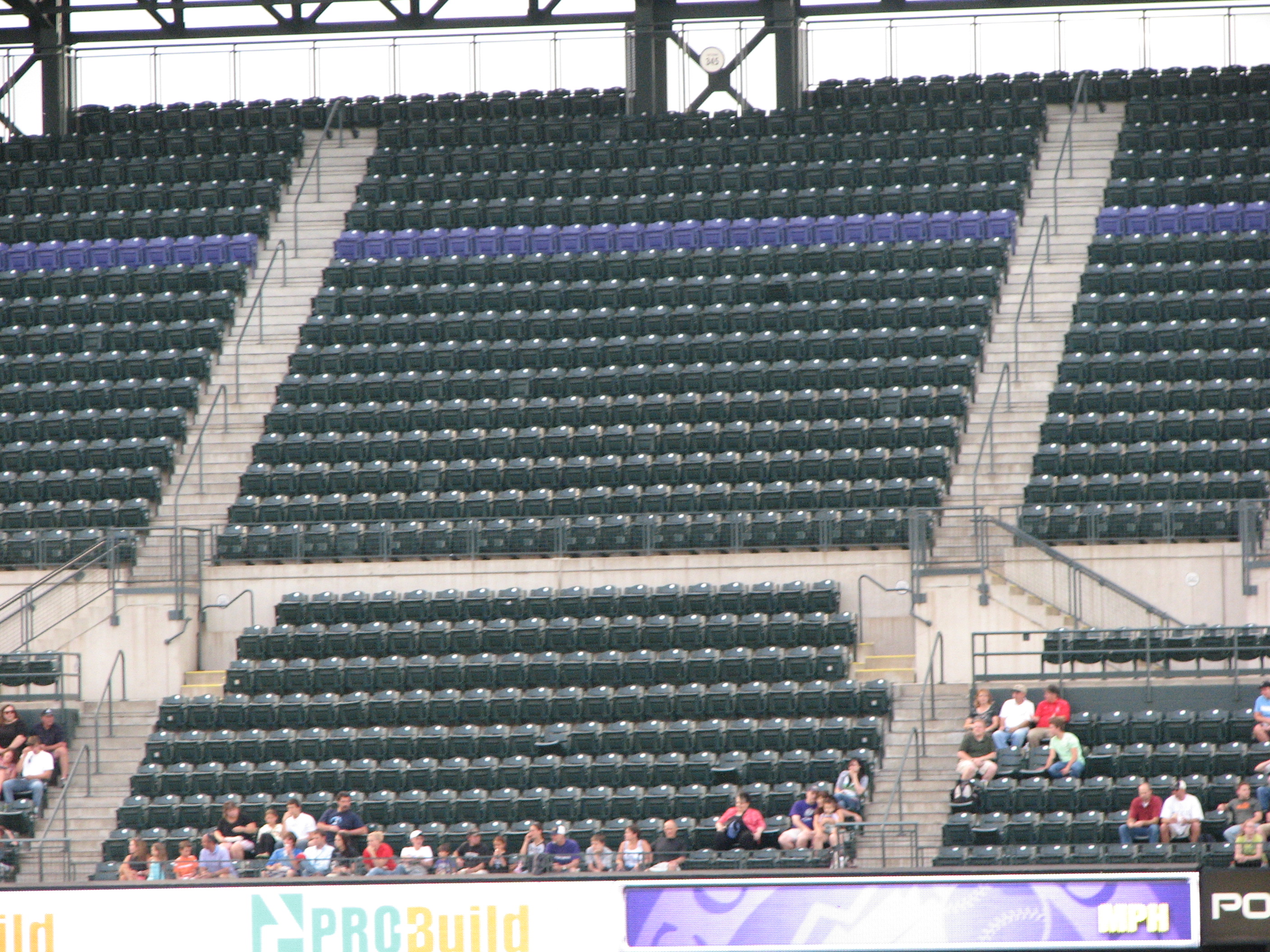
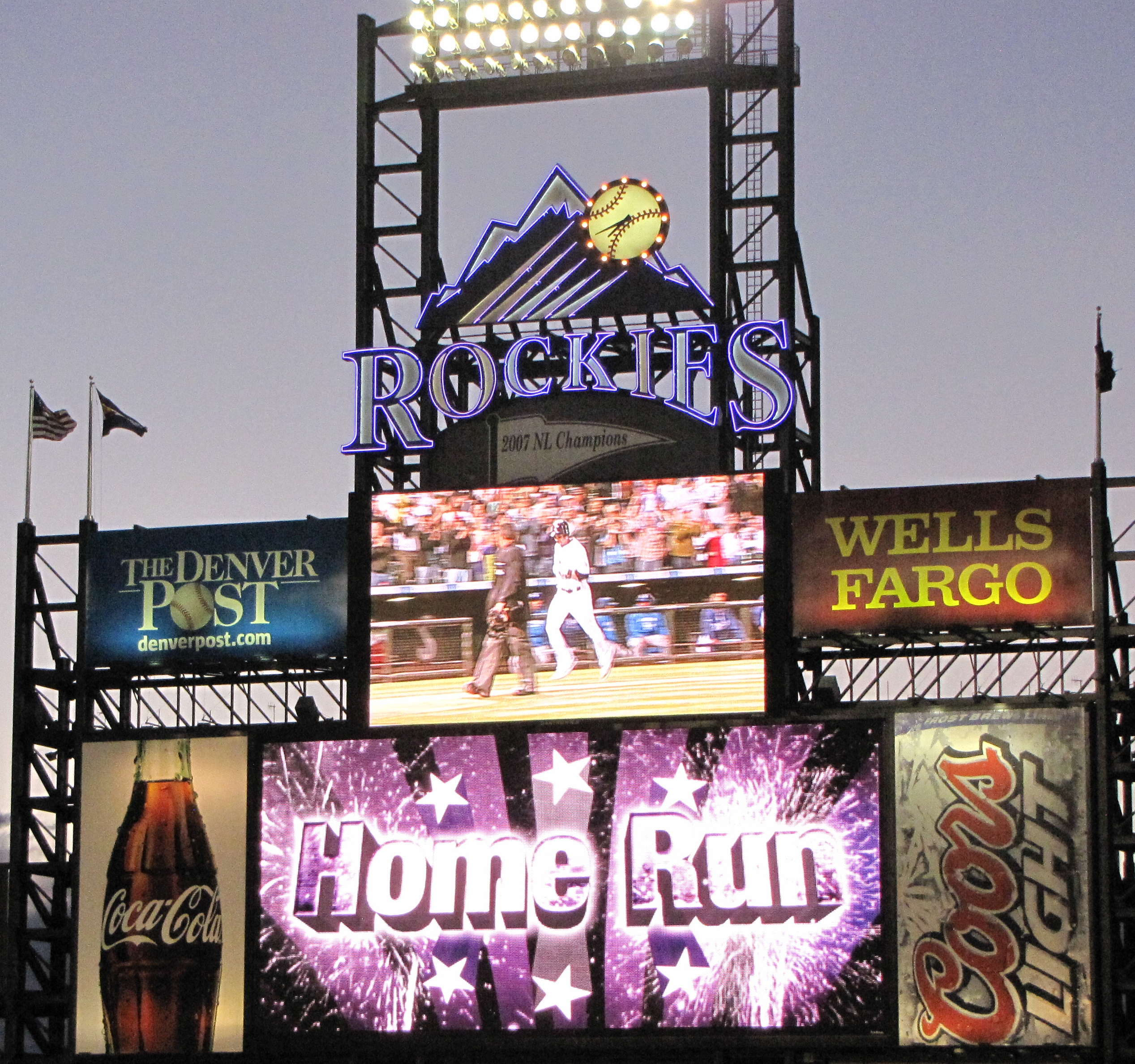

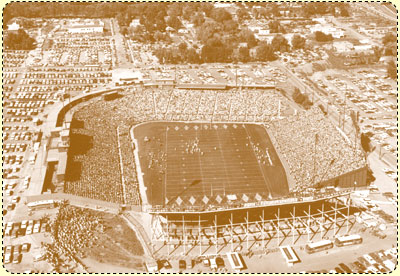
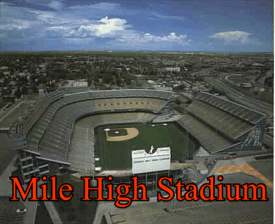

No comments:
Post a Comment